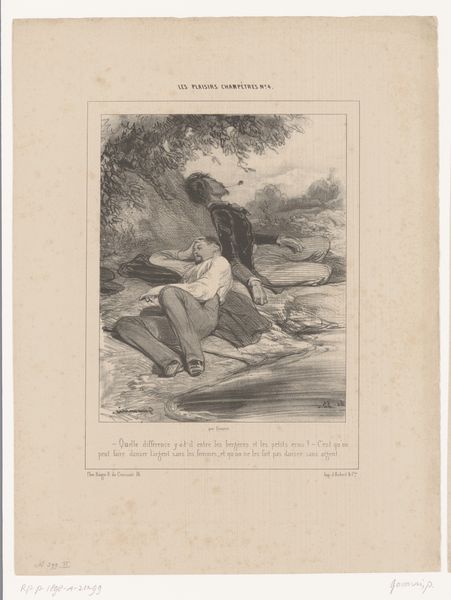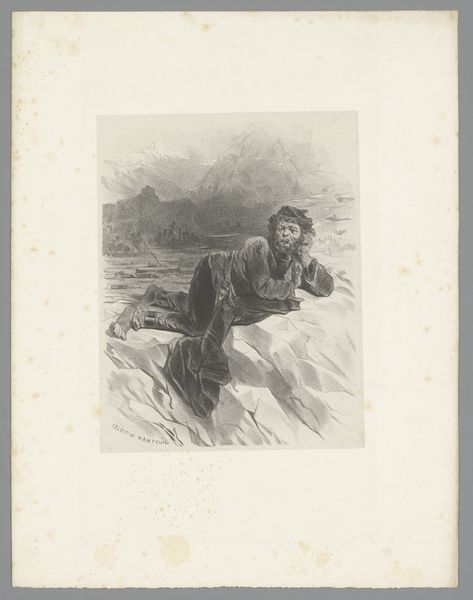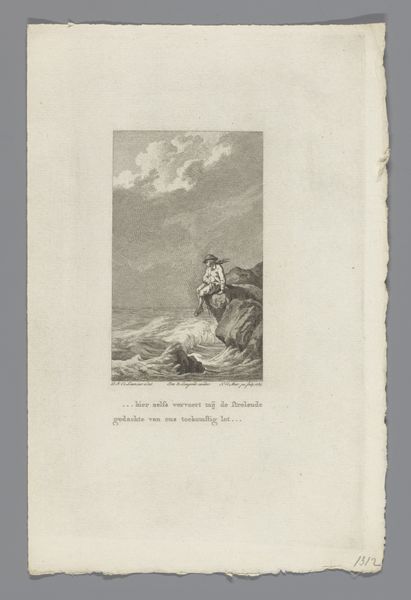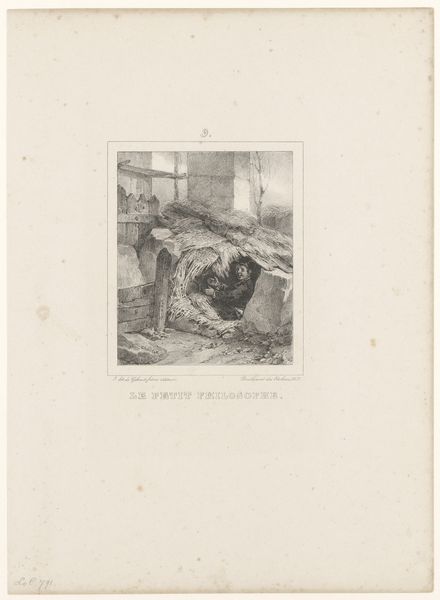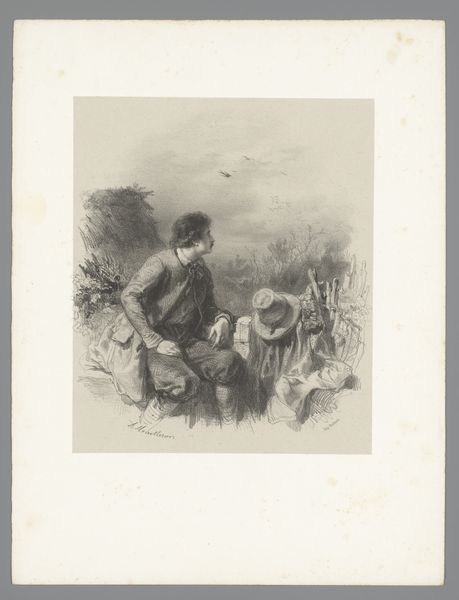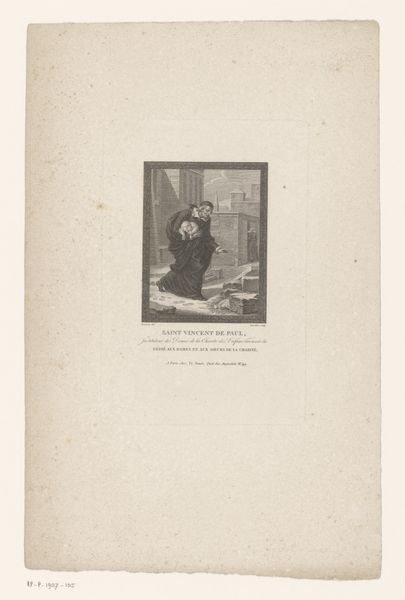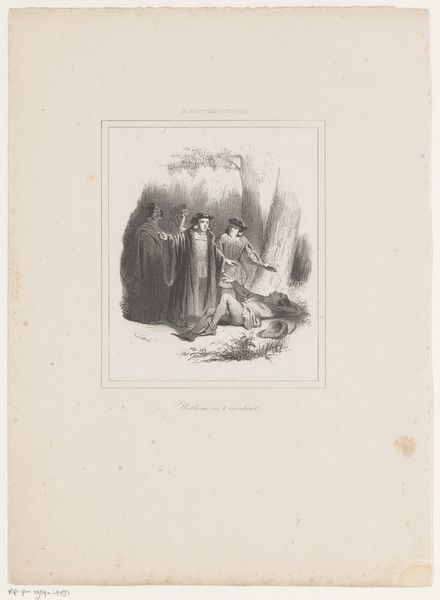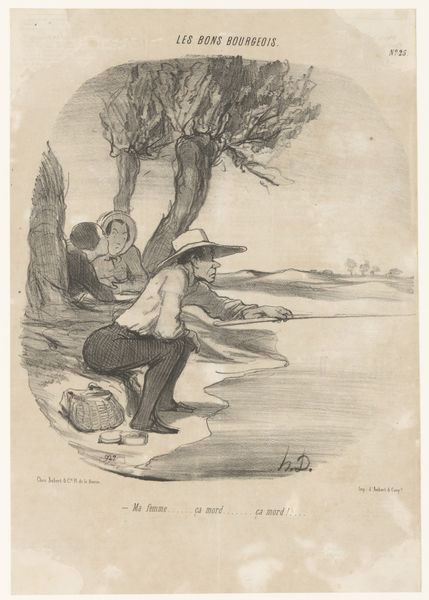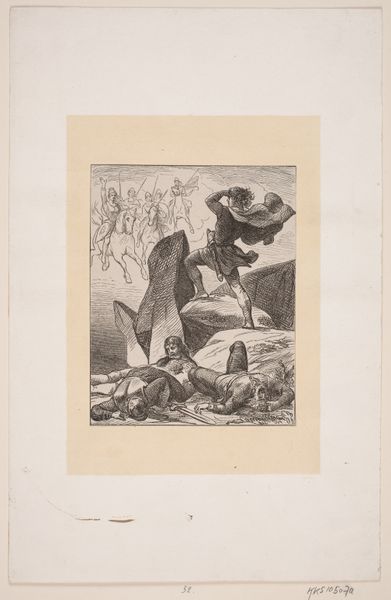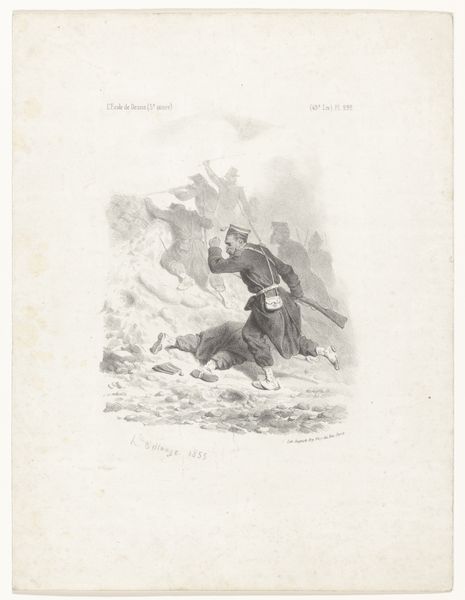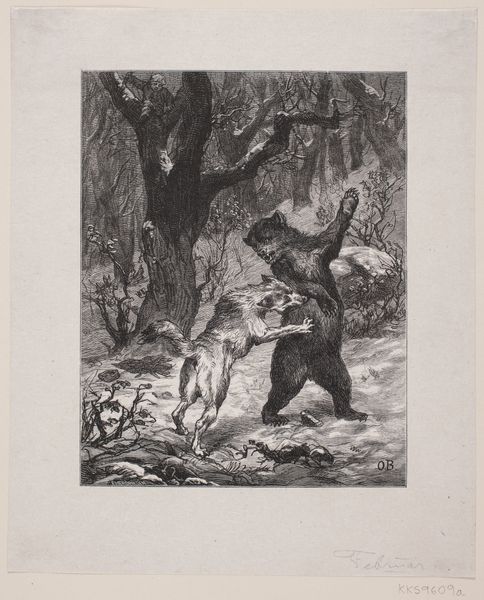
Verliefde jongeman met een rijmwoordenboek onder de voet van een boom before 1839
drawing, paper, pen
portrait
drawing
narrative-art
caricature
paper
romanticism
19th century
pen
watercolour illustration
genre-painting
watercolor
Dimensions: height 271 mm, width 187 mm
Copyright: Rijks Museum: Open Domain
Editor: This is “Verliefde jongeman met een rijmwoordenboek onder de voet van een boom,” or "Young man in love with a rhyming dictionary at the foot of a tree," made by Paul Gavarni before 1839. It's a pen drawing and watercolor on paper. It has such a pensive, romantic mood to it... What do you see in this piece? Curator: I see a satire of Romanticism itself. Note how the youth is literally weighed down by his rhyming dictionary. Rhyme, here, becomes a symbol of contrived, formulaic emotion, stifling genuine feeling. It also highlights a common thread in love stories that speaks to today: How often do we turn to external sources, like books or even social media, to define our feelings instead of truly experiencing them? Editor: That’s an interesting idea. It feels a bit like he's more in love with the *idea* of love than the reality. Do you think Gavarni is poking fun at that? Curator: Absolutely. Look at the way he caricatures the figure, the exaggerated pose. It mocks the hyper-emotionality of the time, that the book is trapping the young man in a cycle of repetitive, artificial sentimentality rather than inspiring true emotional depth. But tell me, what symbols do *you* notice that speak to love? Editor: Well, the obvious one is that he's under a tree. The natural setting might indicate an idealized space for love and reflection but also represents isolation from genuine social connection. And of course, there is the book and its textual representation of 'love' as formula. Curator: Exactly! And look at how the tree's roots encircle him— a visual metaphor for how these literary constraints trap the young man. The play between nature and culture... clever. Editor: I never thought of the image in this way. It shows how complex symbols, even in seemingly straightforward depictions, can offer critiques of cultural trends. Curator: And that interplay, that dialogue between the symbol and its reception, it changes through time. New interpretations emerge. It's one reason we are so interested in art history.
Comments
No comments
Be the first to comment and join the conversation on the ultimate creative platform.
